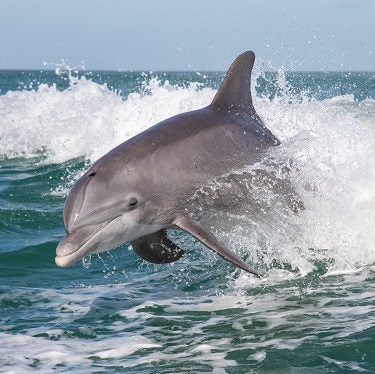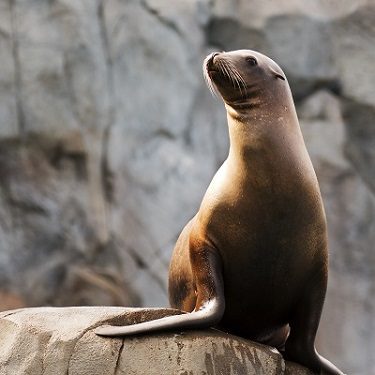Marine Life Encyclopedia
Ocean Fishes
Chinook Salmon
Oncorhynchus Tshawytscha
Distribution
Temperate to sub-polar latitudes of the north Pacific Ocean
eCOSYSTEM/HABITAT
Rivers and coastal seas
FEEDING HABITS
Active predator
TAXONOMY
Order Salmoniformes (salmons and relatives), Family Salmonidae (trouts and salmons)
Adult Chinook salmon live in coastal seas and feed on pelagic invertebrates and other fishes. During the oceanic portion of their life cycle, these fish are primarily concerned with growing and storing energy that they will require for successful reproduction. This period can last anywhere between one and eight years. Once they reach reproductive size, they begin a long migration to their preferred spawning ground, fair inland, in freshwater rivers. In some rivers, the preferred spawning areas can be as far as 1900 miles (3000 km) upriver and at elevations of 5000 feet (1500 m) above sea level. Interestingly, though they mix into large populations at sea, each individual Chinook salmon returns to spawn in the river where it hatched. Thousands of individuals migrate to and reach the spawning grounds at the same time. Once they arrive, females dig nests in light gravel and lay their eggs on the river bottom. Males fertilize the eggs externally, and then the females bury the nests. Chinook salmon do not feed during the long trip to spawn, and the difficult task of swimming upriver, jumping up rapids and waterfalls, and digging nests is too much to survive. As soon as they spawn, individuals of this species die. After they hatch, baby Chinook salmon slowly make their way to the ocean, where they feed until they reach maturity and begin the cycle again.
Chinook salmon are important oceanic prey for species such as the steller sea lion and the killer whale. They are also an extremely important source of nutrients and food for species that live near their spawning grounds (where they all die). Those species include bears, predatory and scavenging birds, wolves, and countless other species. In fact, even trees growing along north Pacific rivers likely rely on dead Chinook salmon and other salmons for vital nutrients required for growth. The Chinook salmon is also an important fishery species. In the ocean, large boats target this species in very large numbers. While they migrate toward their spawning grounds, Chinook salmon are targeted by smaller-scale operations of fishers – many from native peoples that have relied on Chinook salmon runs for thousands of years. Unfortunately, overfishing, climate change, and damming of large, coastal rivers all threaten Chinook salmon, and several populations are critically endangered (very highly vulnerable to extinction) or even extinct. Dams that prevent this species from reaching its preferred spawning grounds are probably the most detrimental human impact on Chinook salmon populations.
Though they are native only to the north Pacific Ocean, Chinook salmon have been established, purposefully or accidentally, in several other places in the world – including New Zealand, Chile, and other places. Many of the established populations are a result of escapement from aquaculture facilities. The Chinook salmon is one of the most heavily aquacultured marine species and is the object of a very large market of farmed salmon.
Engage Youth with Sailors for the Sea
Oceana joined forces with Sailors for the Sea, an ocean conservation organization dedicated to educating and engaging the world’s boating community. Sailors for the Sea developed the KELP (Kids Environmental Lesson Plans) program to create the next generation of ocean stewards. Click here or below to download hands-on marine science activities for kids.
Additional Resources:
Get Involved

Donate Today
SUPPORT OUR WORK TO PROTECT THE OCEANS BY GIVING TODAY
With the support of more than 1 million activists like you, we have already protected nearly 4 million square miles of ocean.

TAKE ACTION NOW
Support policy change for the oceans
Decision-makers need to hear from ocean lovers like you. Make your voice heard!

VISIT OUR ADOPTION CENTER
SYMBOLICALLY ADOPT AN ANIMAL TODAY
Visit our online store to see all the ocean animals you can symbolically adopt, either for yourself or as a gift for someone else.

DOWNLOAD OCEAN ACTIVITIES
HELP KIDS DISCOVER OUR BLUE PLANET
Our free KELP (Kids Environmental Lesson Plans) empower children to learn about and protect our oceans!




